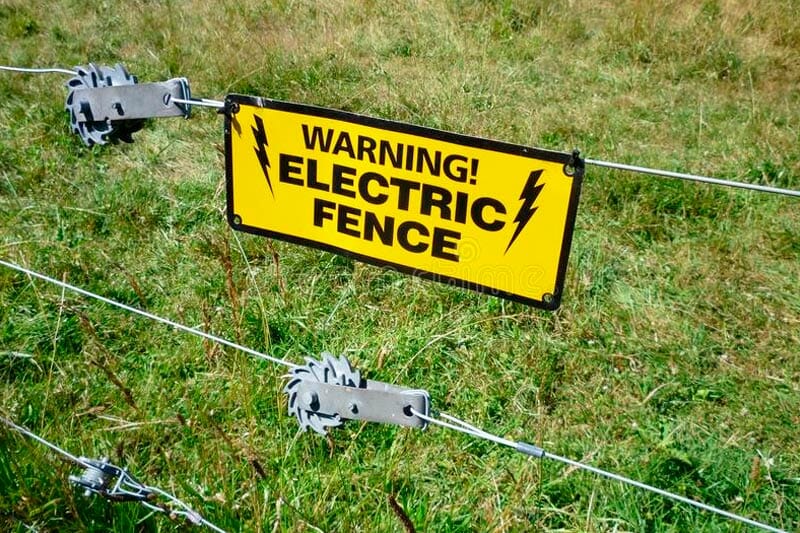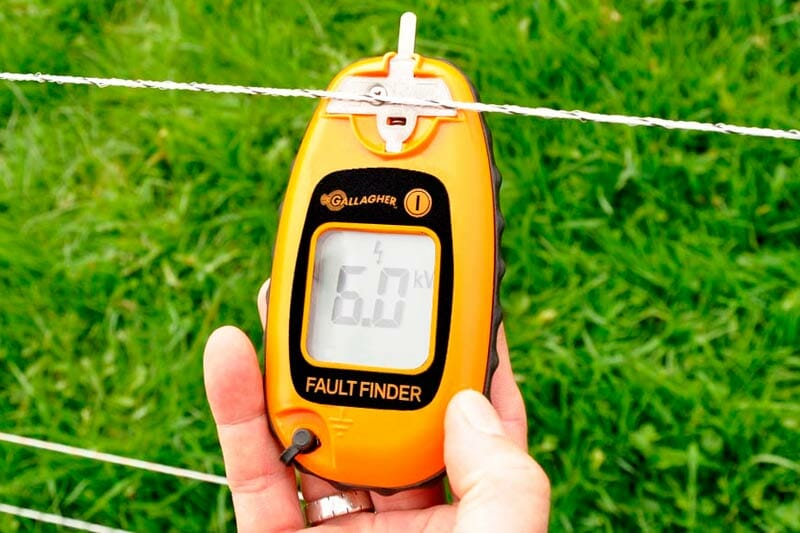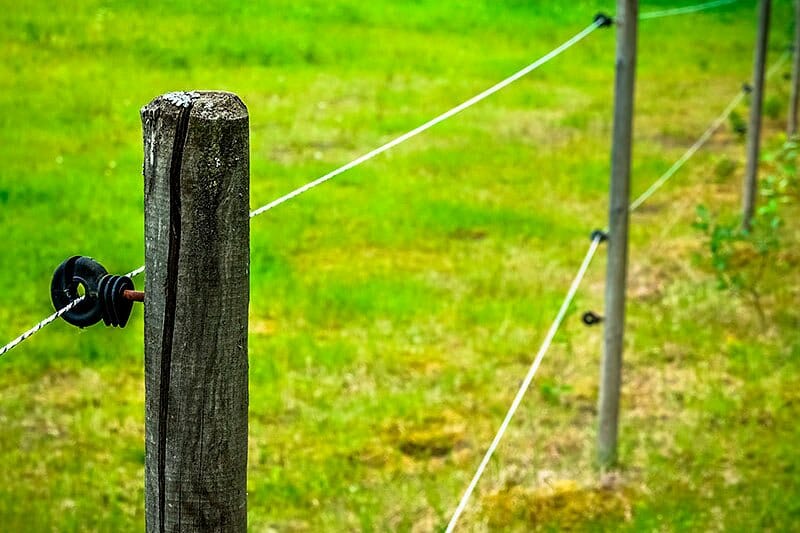An electric fence consumes approximately 3.45 to 7.55 kWh of electricity monthly. In the United States, the average cost of electricity is 23 cents per kWh.
It will cost $0.79 to $1.74 to run an electric fence per month. The cost will vary slightly depending on the voltages used for the animals you want to keep.
A livestock electric fence will need to run 2,000 – 5,000 volts, using an average of 183 Watts of power per day. This works out to be 5.5kWh per month.

What we cover
ToggleHow much power does an electric fence need?
An electric fence will run between 50 and 350 Watts of power each day. The exact amount will depend on the length of the fence and the voltage running to it.
How to calculate the KWh and cost
An example of calculating the KwH usage and subsequent cost is:
kWh = [8 Watts x 24 hours per day x 30 days / 1000] = 5.7 kWh
Cost = [ 5.7 kWh x 23 cents per kWh = $1.31
The cost to run the above electric fence example is $1.31
The Capacity Of Your Charger or Energiser
Always purchase a charger that is larger in capacity than you need. A large-capacity fence energizer allows you to run the correct voltages required for the livestock you are running or to deter the predators you want.
Additionally, if you ever need to extend the fence, you will not have to buy a new energizer. Below are the minimum voltages for livestock.
Minimum voltages for livestock and predator deterant
| Species | Minimum Voltage | Comments |
|---|---|---|
| Cattle | 2000 - 4000 | Dairy cows are often very quiet and the low end voltage may be sufficient. Bulls can be aggressive and need higher voltage to contain them. |
| Sheep | 4000 - 5000 | Wool is excellent insulator, so sheep fence need high voltage to ensure the shock is felt. |
| Goats | 4000 - 5000 | Some breeds of goats are well insulated - see comments on sheep. |
| Horses | 2000 - 3000 | Stallions can be aggressive and need higher voltage to contain them. |
| Deer and Elk | 3000 - 5000 | |
| Wolves and Coyotes | 4000 - 5000 | Some sources suggest a minimum voltage of 5000 for deterring predators. |
| Bears | 5000 |
How To Properly Maintain An Electric Fence
To ensure that your electric fence remains cheap and affordable to run, you need to keep it properly maintained.
Voltage Flow
One of the main factors in electric fence maintenance is keeping the proper voltage flowing through the wires. To do this, you must have a voltmeter also known as a fault finder. The voltmeter checks how much voltage is in the wires of your fence. With the right voltage, you can keep your fence within acceptable monthly consumption of power.
Earthing Cable
Make sure that the earthing and the insulators are fixed properly. This will keep the fencing running properly.
Regular Inspections
An inspection ensures that your fence works well for longer. Inspect your fence to confirm that the wires of the fence are still strong and tightly fixed in place.
Debris removal
Debris on the fence prevents it from working effectively. Branches, twigs, and trees on the fence can cause power to flow slowly or less than required through the fence. Do a fence walk once per week to ensure all is working well.

How Long Does Electric Fence Last
With proper maintenance, your electric fence can last an average of 10 to 20 years. To get this lifespan out of your fence, ensure that you have the right wires on your fence. Stainless steel wires are the best wires to use for a long-lasting electric fence.
Components Of An Electric Fence
The components of an electric fence depend on the type of power it runs on. An electric fence can run on solar power, mains, or a battery.
An electric fence running on mains power consists of an energizer or charger, an earthquake stake, a cut-out switch, posts, insulators, fence wire, cut-off switches, and fence posts.
All these components work together to ensure your electric fence works as it should.
If you are using a battery or solar-powered electric fence, you will need a solar charger and a battery system.
How Does An Electric Fence Work
For an electric fence to work efficiently, the charger or energizer converts the power it gets from its source to a high-voltage pulse. This pulse is released into the fence wire and it opens and closes the gate. This high-voltage pulse can be felt when you or an animal touches the fence.
For your fence to work effectively, you should ensure that you have high-quality components. Also, ensure that the earthing is well connected to the ground and installed away from tree roots and foundations of buildings.
FAQ's
Yes. Rain affects an electric fence by reducing the amount of voltage passing through the fence. One way to eliminate this problem is by using a larger-capacity charger. A high voltage capacity charger will ensure that enough voltage is passing through the fence wires.
Additionally, check that the insulators are properly installed and that they don’t touch any plants. Cut any plants near the insulators of your electric fence. Insulators should not touch any trees or flowers. It will reduce the effectiveness of the fence when it rains.
An electric fence can easily kill you based on the voltage passing through the fence. The higher the voltage the more likely the fence is to kill anyone or animal that touches it. How much voltage is passing through an electric fence is determined by its purpose. An agricultural electric fence has a low voltage as you don’t want to kill your animals. You just need to shock them enough to avoid the fence.
A residential electric fence may have a higher voltage passing through to shock and even kill intruders.
You need at least three grounding rods on your electric fence. The correct grounding you need to install in your electric fence is at least 6 feet long. Install the grounding rods 10-12 feet apart from the starting of the fence.
Also, depending on the size of your fence, the more grounding rods you need. Grounding rods increase the shock potential of your fence. Thus, they are essential parts of the electric fence.
When installing ground rods, ensure that they are far away from telephone and other utility lines which can cause interference.

A joule measures the amount of energy produced by a current of one amp at a one-volt potential. One watt of power produced per second is equal to one joule.
Amps measure the amount of electrical current passing through a wire. The more the amps, the higher the current passing through the wires. The higher the current passing through your fence, the stronger the shock it produces.
Volts or voltage is the force with which electricity is passing through the wires of the fence. The higher the voltage the higher the amount of electricity passing through the fence.
Yes, an electric fence can start a fire.
One way of preventing your electric fence from starting a fire is by proper maintenance. First, ensure that the fence is properly installed with the right amount of grounding rods and proper voltage.
Second, ensure that no plants are growing or falling next to the fence. Especially during the dry season, an electrical fault can easily cause a fire. The dry vegetation next to the fence can spread the fire quickly.
With the right skills and tools, you can easily DIY your electric fence installation. You need the right tools and materials to install an electric fence by yourself. You need to choose the fence and fence wires, you also need proper posts, wire, and insulators before you start.
It is better and easier to hire a professional to install your electric fence for you. They will advise you on the best fence and fence materials to use for your fence. And, they will do it fast and expertly.












